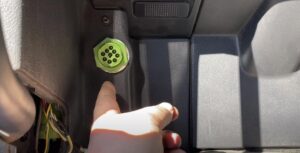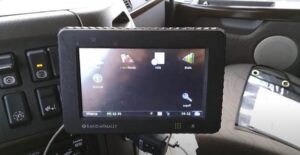
Ever found yourself pondering, “How many miles do I need to drive after resetting my check engine light?” You’re not alone! This question is crucial for drivers who need to pass a vehicle inspection after addressing issues that triggered their check engine light. This article dives into the details of the necessary mileage post-reset to ensure your car is ready for inspection.
Understanding the Check Engine Light
Before we discuss the mileage requirements, it’s essential to understand what the check engine light indicates. This light is part of your car’s onboard diagnostics system (OBD-II), which monitors your vehicle’s performance. When it detects a problem, the light comes on, signaling that something needs attention.
Common Reasons for the Check Engine Light to Illuminate
The check engine light can be triggered by a wide range of issues, each of which is associated with a specific diagnostic trouble code (DTC). These issues can include, but are not limited to:
| Common Car Issues | Description |
| Faulty Oxygen Sensors | Oxygen sensors monitor the level of oxygen in your exhaust gases, helping to maintain optimal fuel-to-air ratio. A malfunctioning oxygen sensor can lead to decreased fuel efficiency and increased emissions. |
| Loose or Damaged Gas Cap | A loose or damaged gas cap can cause fuel vapor to escape from the fuel tank, triggering the check engine light. |
| Faulty Mass Airflow Sensor | This sensor measures the amount of air entering the engine and plays a crucial role in determining the correct air-fuel mixture. A malfunctioning mass airflow sensor can lead to reduced engine performance and increased fuel consumption. |
| Catalytic Converter Issues | Problems with the catalytic converter can result in increased emissions and reduced engine efficiency. |
| Ignition System Problems | Faulty spark plugs, ignition coils, or other ignition system components can lead to misfires, which can trigger the check engine light. |
| Engine Misfires | Misfires can be caused by a variety of factors, including worn spark plugs, fuel delivery issues, or sensor failures. |
| Exhaust Gas Recirculation (EGR) System Malfunctions | Issues with the EGR system can result in increased emissions and reduced engine performance. |
Why Reset the Check Engine Light?
It is imperative that the check engine light be reset when the underlying problem that caused it to illuminate has been addressed and fixed. It is essential to reset the check engine light as part of the repair process for a number of reasons, including the following:
- Verification of Repair: Resetting the check engine light allows you to verify that the issue has been successfully resolved. It ensures that the vehicle’s onboard computer registers the repair and monitors the system for any recurring problems;
- Passing Emissions Tests: Many states require emissions testing for vehicle registration and renewal. A lit check engine light will result in an automatic failure. Resetting the light after repairs is necessary to pass emissions tests;
- Improved Vehicle Performance: When the check engine light is on, the engine may go into a “limp mode” to conserve power and impair fuel efficiency. The engine will run normally after the light is reset.
How Far Should You Drive After Resetting Your Check Engine Light?
After resetting the check engine light, a common question that arises is, “How many miles do I need to drive to ensure the issue is truly resolved?” The answer to this question can vary based on several factors, including the specific problem that triggered the light and your vehicle’s make and model. To gain a clearer understanding, let’s break down some key considerations:
- Drive Cycle: Most modern vehicles require completing a specific drive cycle to reevaluate the various systems and sensors. This drive cycle typically involves a combination of city and highway driving and may require several trips;
- Oxygen Sensor and Catalyst Monitors: If the issue involved the oxygen sensors or catalytic converter, you may need to drive for a significant distance (typically 50-100 miles) to allow these systems to complete their monitoring and testing cycles;
- Readiness Monitors: The engine control module (ECM), which is your car’s onboard computer, also has readiness monitors that need to be restarted. These monitors check a number of systems in your car, such as the pollution control system. The number of miles needed to reset readiness monitors can be different, and you may need to drive in certain circumstances, like cruising on the highway or driving in stop-and-go traffic;
- Consult the Repair Manual: For precise information regarding the drive cycle and readiness monitor reset requirements for your specific vehicle, consult the manufacturer’s repair manual or a trusted mechanic. They can provide you with the most accurate guidance tailored to your car’s make and model.
The Post-Reset Drive: How Many Miles?

The mileage range of 30 to 100 miles is not arbitrary but based on the concept of a “drive cycle.” A drive cycle is a standardized set of operating conditions that your vehicle must go through to evaluate and test all the emissions systems and sensors thoroughly. These conditions encompass various driving scenarios, including highway and city driving, idling, and maintaining different speeds.
What is a Drive Cycle?
A drive cycle is essentially a series of specific conditions and driving scenarios that your car must undergo to ensure that all the emissions-related systems are functioning optimally. The drive cycle is designed to mimic real-world driving conditions, allowing the vehicle’s onboard computer to perform comprehensive checks.
Key Elements of a Drive Cycle
A typical drive cycle consists of the following key elements:
- Cold Start: The cycle begins with a cold start, where the engine has been off for an extended period. This phase allows the vehicle to assess how well it starts and manages emissions during initial operation;
- City Driving: Part of the drive cycle involves low-speed, stop-and-go city driving, simulating urban driving conditions. This phase evaluates emissions control during short trips and frequent stops.
- Highway Driving: To assess emissions under higher-speed, constant cruising conditions, the drive cycle includes a segment of highway driving. This phase ensures that emissions systems are functioning correctly during extended highway trips;
- Idle Time: The vehicle needs to idle for a specific duration to test emissions performance when the engine is at rest;
- Speed Variation: The drive cycle may require the vehicle to operate at different speeds, including both low and high speeds. This variation tests how emissions systems respond to changing conditions.
Why the Range of 30 to 100 Miles?
The range of 30 to 100 miles is recommended because it allows your vehicle to complete a full drive cycle under a variety of real-world driving conditions. Some emissions systems and sensors may require more extensive testing, and certain vehicles may have longer or more complex drive cycles than others. Here’s a breakdown of why this range is recommended:
- Completing the Drive Cycle: Some vehicles may require more miles to complete the entire drive cycle and test all emissions systems thoroughly. This is especially true for newer vehicles with advanced emissions control technology;
- Ensuring Accuracy: By driving within the 30 to 100-mile range, you increase the likelihood of all systems being tested accurately. It provides a buffer to account for variations in driving conditions and vehicle performance;
- Readiness Monitors: The drive cycle is also necessary for resetting readiness monitors. These monitors assess various systems within your vehicle, including emissions control, and they need to be in the “ready” state to pass emissions tests during vehicle inspections.
Factors Influencing the Required Mileage
Several factors can influence “how many miles do I need to drive after resetting my check engine light.” These include:
Vehicle Make and Model
The make and model of your vehicle play a significant role in determining the required mileage after resetting the check engine light. Different manufacturers may have varying drive cycle requirements, and these requirements can also differ between models from the same manufacturer.
Table: Examples of Varied Mileage Requirements by Vehicle Make
| Vehicle Make | Mileage Requirement After Resetting Check Engine Light |
| Ford | 50 to 100 miles |
| Toyota | 30 to 60 miles |
| Honda | 40 to 80 miles |
| Chevrolet | 60 to 120 miles |
| BMW | 70 to 140 miles |
As shown in the table above, the mileage requirements can vary widely among different vehicle makes. It is essential to consult your vehicle’s manufacturer-specific documentation or consult a mechanic familiar with your car’s make and model for precise guidance.
Type of Repair
The nature of the repair or fix performed on your vehicle can significantly affect the required mileage after resetting the check engine light. Some repairs may involve specific systems or components that require more extensive testing, resulting in a longer drive cycle.
Table: Mileage Variations Based on the Type of Repair
| Type of Repair | Mileage Requirement After Resetting Check Engine Light |
| Oxygen Sensor Replacement | 30 to 60 miles |
| Catalytic Converter Repair | 80 to 120 miles |
| Ignition System Repair | 50 to 90 miles |
| EGR System Fix | 40 to 70 miles |
| Fuel System Adjustment | 60 to 100 miles |
Table above illustrates how the type of repair can influence the mileage needed to complete the drive cycle. More complex repairs may require a more extended period of driving to ensure that all related systems are functioning correctly.
Driving Conditions
The mix of driving conditions, including highway and city driving, is a crucial factor in determining the required mileage after resetting the check engine light. A balanced combination of both types of driving is often essential to simulate real-world driving scenarios.
Table: Influence of Driving Conditions on Mileage Requirements
| Driving Conditions | Mileage Requirement After Resetting Check Engine Light |
| Mostly Highway Driving | 30 to 50 miles |
| Balanced Highway and City Mix | 50 to 80 miles |
| Mostly City Driving | 80 to 100 miles |
| Stop-and-Go Traffic | 90 to 120 miles |
Table above demonstrates that the driving conditions you encounter post-reset play a vital role in determining the mileage needed. A mix of highway and city driving is often recommended as it subjects your vehicle to a broader range of operating conditions.
Tips for a Successful Post-Reset Drive

To ensure a successful post-reset drive, it is crucial to follow a set of essential tips that can optimize your vehicle’s performance and maintain its overall health. These guidelines can help you make the most out of your drive cycle reset and avoid potential issues in the long run.
Vary Your Speeds
One of the primary steps to a successful drive cycle reset is to incorporate a combination of highway and city driving. This diversity in driving conditions allows your vehicle’s engine and emissions systems to undergo a complete cycle of operation. It helps in clearing any diagnostic trouble codes (DTCs) and ensuring that all onboard monitors are fully tested. By driving on the highway, you activate the oxygen sensor and catalyst monitor, while city driving engages the evaporative system monitor and others. This variation ensures that your vehicle’s emission control system is thoroughly tested and ready for an emissions inspection.
Warm-Up Your Car
Before embarking on your drive, it’s essential to allow your vehicle’s engine to warm up properly. This ensures that the engine reaches its normal operating temperature, which is vital for the accurate functioning of the emissions control system. During warm-up, the engine computer calibrates various sensors and systems, such as the oxygen sensors, which are crucial for monitoring the air-fuel mixture. Without proper warm-up, these sensors may not provide accurate readings, potentially leading to emission test failures. Allow your vehicle to idle for a few minutes until the engine reaches its normal operating temperature to ensure an effective drive cycle reset.
Avoid Short Trips
Short trips can be detrimental to the success of your drive cycle reset. During short drives, your vehicle may not have enough time to complete the necessary emission control system tests. Some monitors require specific driving conditions and distances to activate and complete their tests. If you frequently engage in short trips, these monitors may remain in a “not ready” state, which can result in a failed emissions inspection. To overcome this issue, try to combine short trips into longer ones or plan your drives to include both city and highway routes, as previously mentioned. This way, your vehicle can perform the required tests and ensure a successful drive cycle reset, allowing you to pass an emissions inspection with ease.
Conclusion
So, “How many miles do I need to drive after resetting my check engine light?” While the answer varies, understanding your vehicle’s requirements and ensuring a proper mix of driving conditions will prepare you for a successful inspection. Remember, mileage matters, but so does how you drive those miles!
FAQ
Q: How many miles do I need to drive after resetting my check engine light for a standard sedan?
A: Typically, 40-60 miles should suffice for a standard sedan.
Q: Can driving conditions affect how many miles I need to drive after resetting my check engine light?
A: Yes, a mix of city and highway driving is often necessary to complete a drive cycle.
Q: What happens if I don’t drive enough miles after resetting the check engine light?
A: Your vehicle may not complete its drive cycle, potentially leading to issues during inspection.





